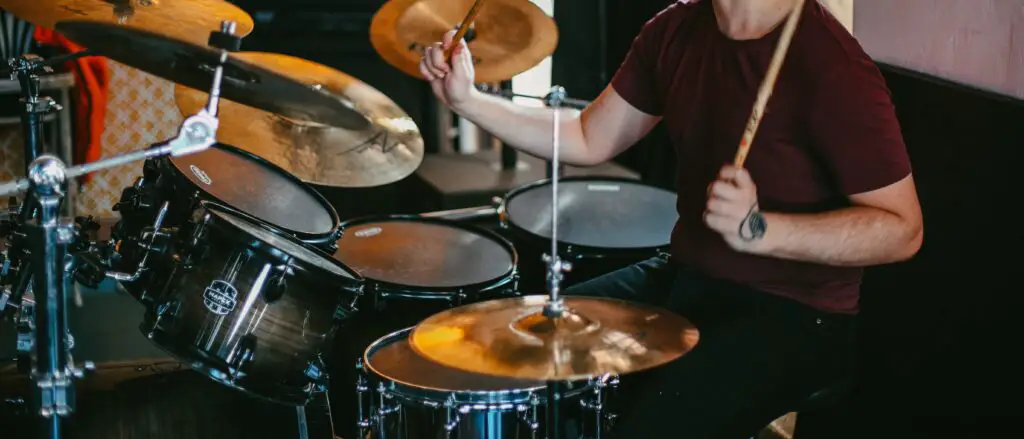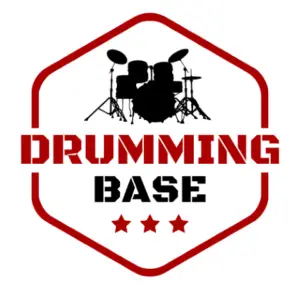Hi-hats are made up of two cymbals positioned closely together. The top hi-hat is thinner and lighter than the bottom hi-hat. The top hi-hat typically weighs around 800-1100 g, whereas the bottom hi-hat usually weighs 1200-1500 g.
But why are the top and bottom hi-hat cymbals different? What effect does this have on the sound and feel of the hi-hats?
The Thinner Hi-Hat Goes on Top
The thinner and lighter hi-hat cymbal goes on top, and the thicker and heavier hi-hat cymbal goes underneath. The sound of the hi-hat cymbals is mainly dictated by the top hi-hat (particularly in the open position). Having a thinner top hi-hat has several effects:
- Faster attack
- More wash
- Less volume
Having the thinner hi-hat on top makes the cymbal sound more responsive because it is lighter and therefore has a faster attack. It also gives the hi-hat more sizzle and wash.
If you were to swap the hi-hats over and put the thicker cymbal on top, then there will be more sustain and less responsiveness.
It’s fine to experiment and try putting the “bottom” hi-hat on top to switch things up. You may actually prefer the sound that way! The only time where it sounds pretty bad to most people is when the bottom hi-hat is significantly thicker than the top.

Practical Reasons Why the Thicker Hi-Hat Goes Underneath
It’s not just the sound that the hi-hat orientation affects. There are two main practical reasons why the lighter hi-hat goes on top and the heavier hi-hat goes underneath:
- It reduces the chance bottom hi-hat getting damaged
- It puts less strain on the foot
The hi-hats can either be in an open or closed position. Most of the time, the hi-hats will be closed meaning they are pressed together using the pedal. However, it’s common to open them as an accent on &4 (or &2 or every &). Check out this article on opening ad closing the hi-hats to learn more.
When the hi-hats open up, it’s only the “top” hi-hat that moves up. Then when the pedal is pressed down again, the hi-hat will drop and meet the bottom hi-hat.
If the heavier hi-hat is on top, then this can put the lighter bottom hi-hat under extra stress. It’s very unlikely that the hi-hats will get damaged easily (unless the top one is super heavy), but it can cause excessive wear over time.
Also, since the position of the hi-hats (open vs closed) is controlled by the pedal, having the lighter cymbal on top helps to make it easier to lift up and down because it puts the foot under less strain. This is only minor though as the weight difference between the top and bottom hi-hat is only small (usually about 200-300 g).
Does the Bottom Hi-Hat Matter?
Although the top hi-hat cymbal has more of an impact on the sound, the bottom hi-hat cymbal is still very important, particularly when they are closed.
The following features of the bottom hi-hat have an effect on the overall sound and feel:
- Thickness and weight: having a thicker, and hence heavier bottom hi-hat cymbal will make it sound louder and increase the amount of sustain
- Shape: this refers to the bell and the edges. Some bottom hi-hats have waves which let more air escape and give the hi-hat a dryer sound.
- Angle: having the bottom hi-hat tilted slightly allows air to escape and prevents the cymbals from sticking together
Here are some more articles you might find useful:
